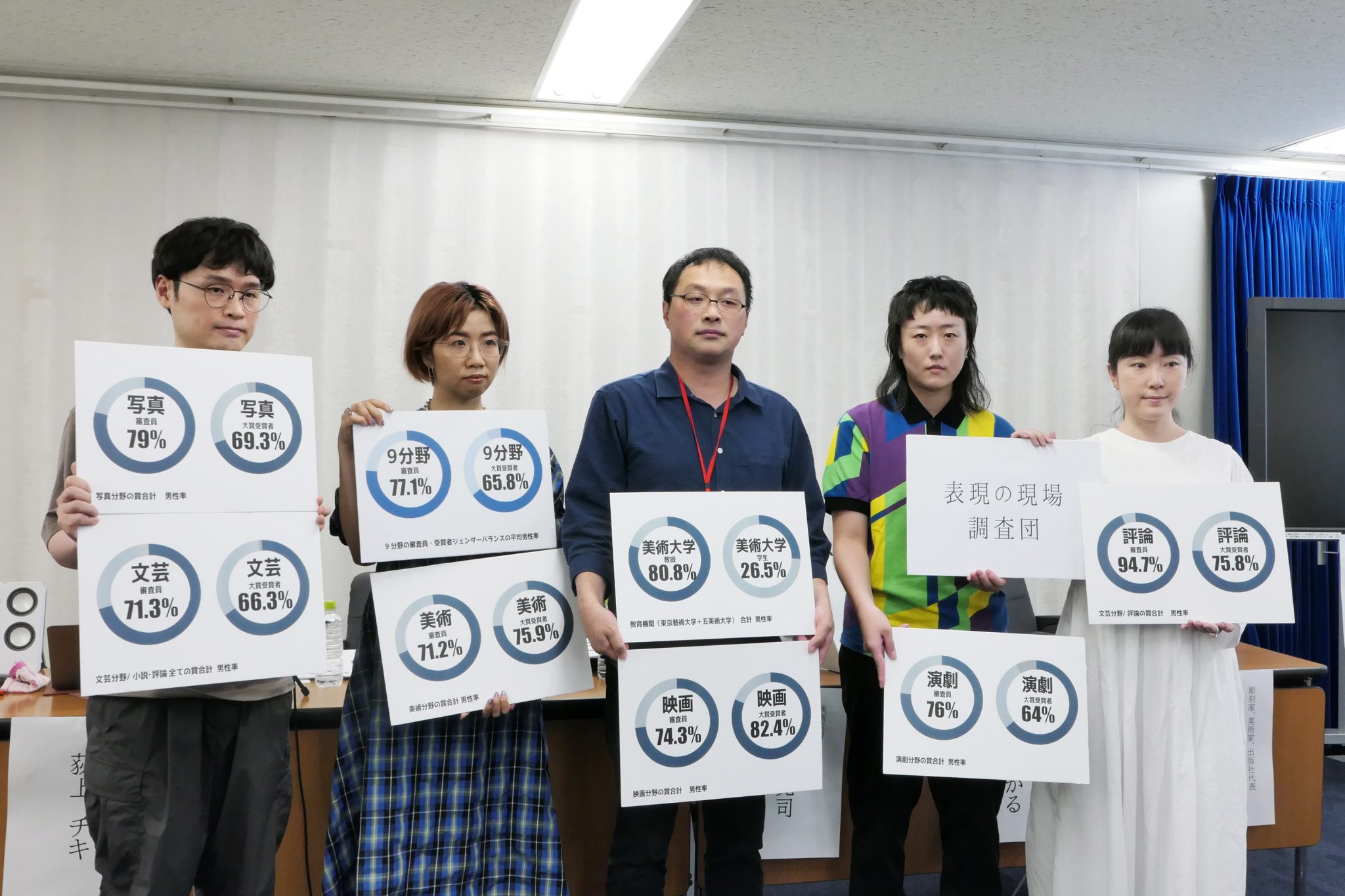Selected by Koki Tanaka
The artworld sucks. At the moment, both sociopolitical and market-led forms of artmaking are moving towards a kind of populism, being led there by a numbers game. On the one hand, the performance of social justice in art is moving towards quantification through social media and crowdfunded participation, and on the other hand, the market is moving towards ever-greater quantification through pricing and its own social media attention. Museums are similarly obsessed with attendance numbers and online ‘interaction’. In this sense, art is pervaded by a numerical desire, and art practice, for the moment, cannot resist such a wave of populist quantification. Art activism (media performance) and NFT (speculation), which are optimised for this situation, appear to be polar opposites, but they are the same.
But there is still hope. Even in Japan. The Hyogen no Genba Chosadan (Investigating Discrimination, Harassment, and Inequality in the Arts, IDHIA a self-initiated collective of cultural workers – including actors, filmmakers, translators and artists – was formed in 2020 to improve Japan’s creative-labour environment in art and culture in general, including contemporary art and film. A harassment survey was conducted in 2021 and a gender balance survey in 2022, which led to the publications of detailed reports. The group makes use of quantification, but here it is a tool for change. Of the 1,449 respondents to the harassment survey (62 percent were female), 82 percent reported being subjected to some form of sexual harassment or power harassment. Just under 10 percent reported sexual assault. The gender-balance survey disclosed that there are more men on the jury and among the winners of prizes for literature, theatre and art, while a survey on the current state of art schools showed that 73.5 percent of students are women, while just over 80 percent of professorships are men. In Japan, where the patriarchal society remains very strong, the position of women is still fragile. This is even more pronounced in the creative field.
The survey conducted by the collective indicates that the artworld in Japan has long been uneven. But the reality that this survey makes clear is a key for possible future change. For Documenta 15, the slogan was ‘Make friends, not art’. This is definitely not the time to be making just friends. What we need is to renew the infrastructure of the artworld. Following institutional critique, I would call what we need infrastructural critique. IDHIA is just the beginning.
Current Members of Hyogen no Genba Chosadan (Investigating Discrimination, Harassment, and Inequality in the Arts) are Yuko Okada, Nodoka Odawara, Emiko Kasahara, Nao Kimura, Kyun Chome, Kanoko Tamura, Michiko Tsuda, Eri Terada, Niina Hashida, Kaya Hanasaki, Koji Fukada, Maya Masuda, Tomohiro Miyakawa, Aya Momose, Hikaru Morimoto and Haruka Moriyama. Their reports are available at hyogen-genba.com.
Koki Tanaka is a performance, video and installation artist based in Tokyo whose work was included in the 2022 Ghost 2565 performance triennial, Bangkok.
